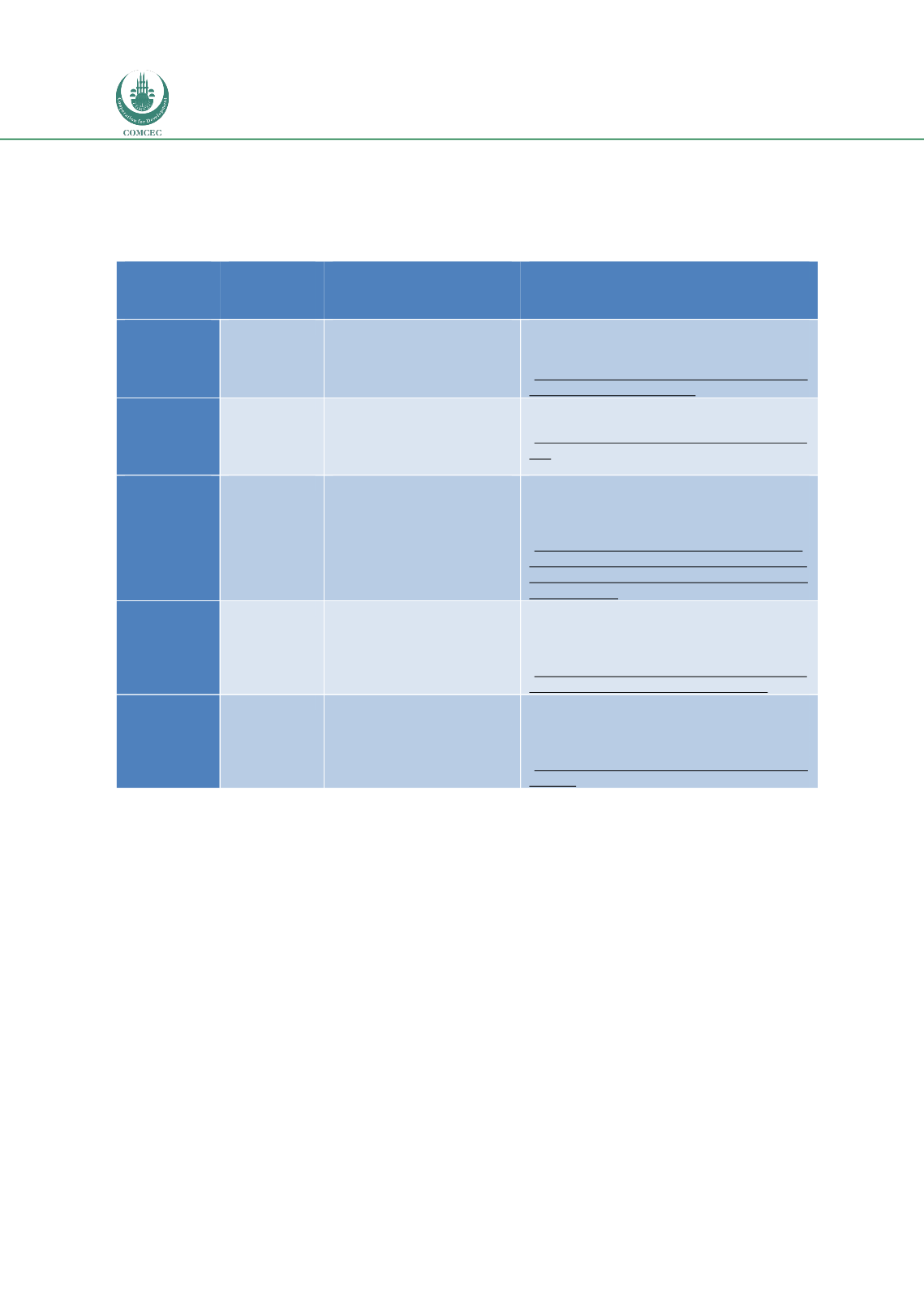

Reducing Postharvest Losses
In the OIC Member Countries
56
Table 19 presents further details of the fisheries in countries where fisheries and aquaculture
is of some importance is and is useful for giving a wider overview of the sector.
Table 19: Details of the fisheries in countries where fisheries and aquaculture is of some
importance or more
Country
Total
production
(tonnes)
Main fishery
PHL publications
Bangladesh
2,475,699
Important inland fishing nation;
Main species caught is carp.
Aquaculture
is
rapidly
expanding. Shrimps and
prawns are main exports.
Key reference: Alam (2010). Postharvest Loss
reduction in Fisheries in Bangladesh: A Way
Forward
to
Food
Security,
USAID
( http://www.nfpcsp.org/agridrupal/sites/default/f iles/Nowsad_Alam-PR5-08.pdf )Egypt
1,440,443
Vibrant inland and marine
capture sector. Africa’s largest
aquaculture
producer
and
globally second largest tilapia
farmer.
Key reference: Mcfadyen, Nasr-Allah and Dickson
(2012),
WorldFish,
( http://pubs.iclarm.net/resource_centre/WF_3559 .pdf )Indonesia
9,952,509
95% of capture fisheries from
artisanal
fishers,
with
associated
PH
challenge.
Largest producer by far in study
area. Recent studies indicate
improving situation with PHL.
Key reference: Wibowo, Utomo, Syamdidi &
Kusumawati (2014), Proceeding of The 3rd
International Seminar of Fisheries and Marine
Science,
( http://repository.unri.ac.id/xmlui/bitstream/han dle/123456789/8120/8.%20SINGGIH%20W%2c%20 BAGUS%20S%2c%20SYAMDIDI%2c%20RINTA%20K. pdf?sequence=1 )Maldives
129,842
Fish and tourism are the
mainstays
of
Maldives
economy. Capture fishery
revolves around tuna species
for
canning
and
fresh
consumption.
Key reference: Subasinghe (2005), Assessment of
rehabilitation and reconstruction needs in the
Tsunami affected postharvest fisheries sector-
Maldives,
FAO.
( ftp://ftp.fao.org/fi/document/tsunamis_05/maldi ves/cons_miss_rep/Subasinghe_Apr_05.pdf )Nigeria
1,000,061
Traditional fish processing
technologies vary widely in
terms of equipment type, size
and processing efficiency in
Nigeria’s coastal states.
Key Reference: George, Ogbolu, Olaoya, Idowu &
Odulate (2016); Fish Processing Technologies in
Nigeria: A Case Study of Ibeju-Lekki Local
Government Area, Lagos State; Science Alert
( http://scialert.net/fulltext/?doi=ajft.2014.302.310 &org=10 )















